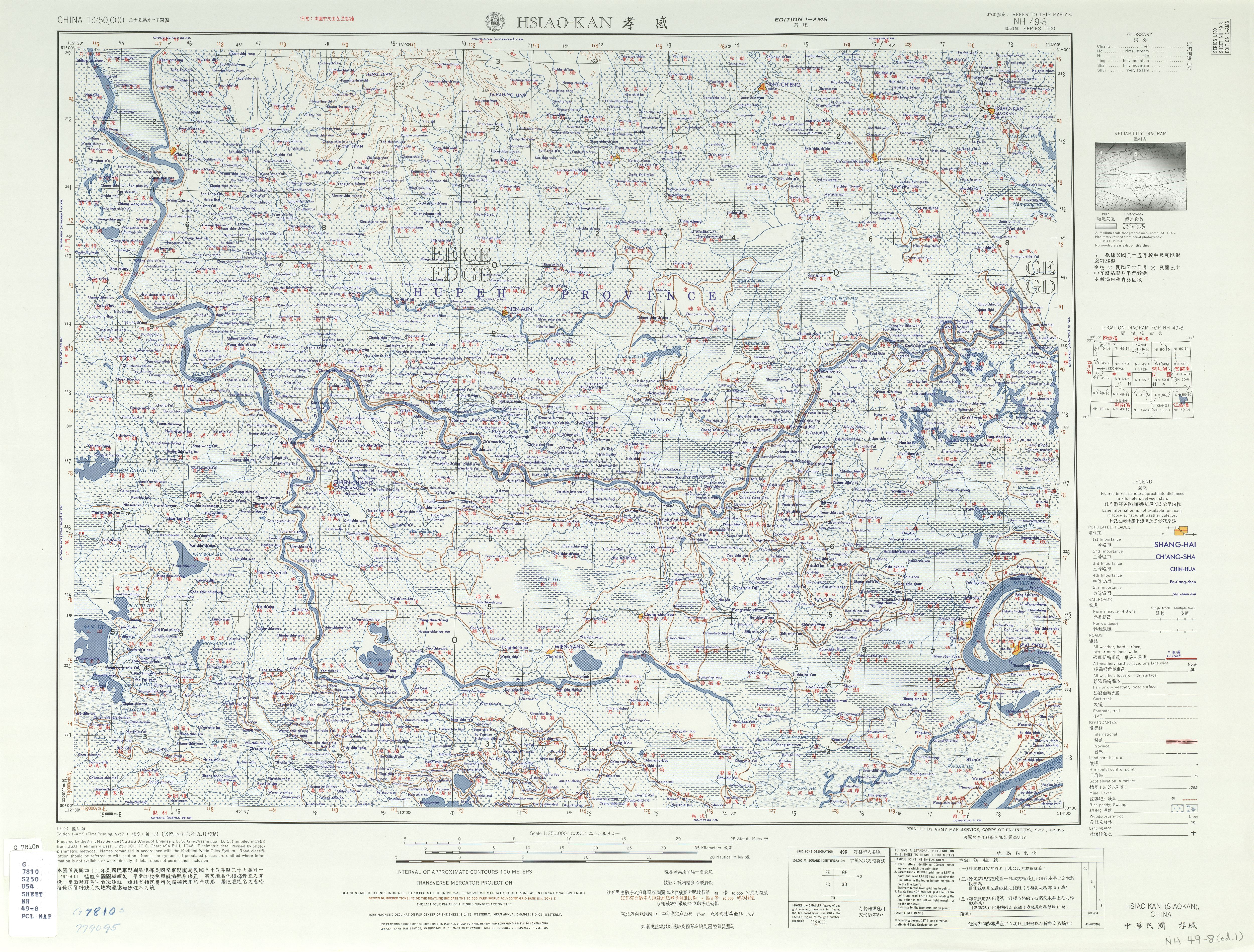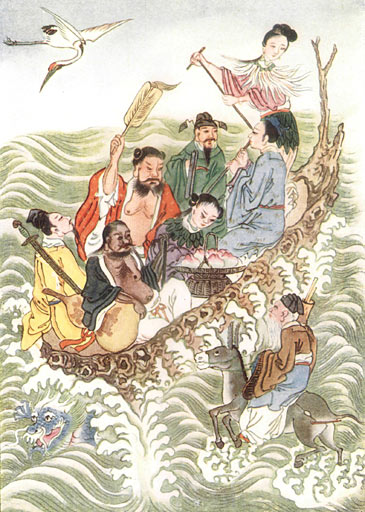|
Sheshui
The She River (''She'' pronounced like "shuh"), also known by its Chinese name Sheshui, is a left tributary of the Yangtze in central China. It has a length of 112 km. The route of the She River was noted in the Commentary on the Water Classic. It is the namesake of Shekou in Huangpi District, Wuhan. Shekouxincheng Station is located near the mouth of the She River. Geography The headwaters of the She River flow from Mount Sanjiao ('Triangle Mountain') in Dawu County, Hubei in Xiaogan. The river then travels east across Hong'an County in Huanggang, then entering the Huangpi District of Wuhan. Its watershed area is roughly rectangular in shape. On the lower reaches of the She River, there are several archaeological sites including the Masai archaeological site dating from the Warring States Period, the Chengmentan archaeological site (New Stone Age), and the Sangujing archaeological site. ''Warm Winter on the She River'' The ''Warm Winter on the She River'' (ć» ć°´ĺ ... [...More Info...] [...Related Items...] OR: [Wikipedia] [Google] [Baidu] |
Huangpi District
Huangpi District () is one of 13 urban districts of the prefecture-level city of Wuhan, the capital of Hubei Province, China, situated on the northern (left) bank of the Yangtze River. The Sheshui enters the Yangtze at Huangpi. The district is primarily rural, but also includes important infrastructure facilities, such as Wuhan Tianhe International Airport and Wuhan North Railway Station, which is one of the main freight stations and classification yards on the Beijing–Guangzhou Railway. It is the northernmost of Wuhan's districts as well as the most spacious. On the left bank of the Yangtze, it borders the districts of Xinzhou to the east, and Jiang'an to the south, and Dongxihu to the southwest; on the opposite bank, it borders Hongshan. It also borders the prefecture-level cities of Huanggang to the northeast and Xiaogan to the northwest. The Sheshui (She River) enters the Yangtze River at Shekou in Huangpi. The use of the character ''pi'' () in Huangpi is cited in the C ... [...More Info...] [...Related Items...] OR: [Wikipedia] [Google] [Baidu] |
Xiaogan
Xiaogan () is a prefecture-level city in east-central Hubei province, People's Republic of China, some northwest of the provincial capital of Wuhan. According to the 2020 census, its population totaled 4,270,371, of whom 988,479 lived in the built-up (''or metro'') area of Xiaonan District. The city name Xiaogan, meaning ''Filial Piety Moves Tian'' (), is from the story of Dong Yong (), who sold himself for his father's funeral, in ''The Twenty-four Filial Exemplars''. The Sheshui River originates in Xiaogan's Dawu County. On the third day of the third month of the lunar calendar, many in Wuhan eat 'di cai zhu ji dan' () which is supposed to prevent illness in the coming year. This practice is related to a story involving Shennong in Xiaogan. Administrative divisions Since 2000, Xiaogan has been divided into 1 district, 3 county-level cities and 3 counties: *Xiaonan District () *Yingcheng City () *Anlu City () *Hanchuan City () *Xiaochang County () * Dawu County () *Yunmeng Cou ... [...More Info...] [...Related Items...] OR: [Wikipedia] [Google] [Baidu] |
China
China, officially the People's Republic of China (PRC), is a country in East Asia. It is the world's most populous country, with a population exceeding 1.4 billion, slightly ahead of India. China spans the equivalent of five time zones and borders fourteen countries by land, the most of any country in the world, tied with Russia. Covering an area of approximately , it is the world's third largest country by total land area. The country consists of 22 provinces, five autonomous regions, four municipalities, and two Special Administrative Regions (Hong Kong and Macau). The national capital is Beijing, and the most populous city and financial center is Shanghai. Modern Chinese trace their origins to a cradle of civilization in the fertile basin of the Yellow River in the North China Plain. The semi-legendary Xia dynasty in the 21st century BCE and the well-attested Shang and Zhou dynasties developed a bureaucratic political system to serve hereditary monarchies, or dyna ... [...More Info...] [...Related Items...] OR: [Wikipedia] [Google] [Baidu] |
Eight Immortals
The Eight Immortals () are a group of legendary ''xian'' ("immortals") in Chinese mythology. Each immortal's power can be transferred to a vessel () that can bestow life or destroy evil. Together, these eight vessels are called the "Covert Eight Immortals" (). Most of them are said to have been born in the Tang or Song Dynasty. They are revered by the Taoists and are also a popular element in secular Chinese culture. They are said to live on a group of five islands in the Bohai Sea, which includes Mount Penglai. The Immortals are: * He Xiangu (), in modern context generally seen as the only female of the group, often depicted holding a lotus flower. * Cao Guojiu (), related to a Song dynasty emperor before he became an immortal. * Li Tieguai (), considered to be mentally disturbed and associated with medicine and easing the suffering of the sick and needy, identified by his iron crutch and Calabash bottle. * Lan Caihe (), originally pictured as female later developed an ambiguous ... [...More Info...] [...Related Items...] OR: [Wikipedia] [Google] [Baidu] |
Qing Dynasty
The Qing dynasty ( ), officially the Great Qing,, was a Manchu-led imperial dynasty of China and the last orthodox dynasty in Chinese history. It emerged from the Later Jin dynasty founded by the Jianzhou Jurchens, a Tungusic-speaking ethnic group who unified other Jurchen tribes to form a new "Manchu" ethnic identity. The dynasty was officially proclaimed in 1636 in Manchuria (modern-day Northeast China and Outer Manchuria). It seized control of Beijing in 1644, then later expanded its rule over the whole of China proper and Taiwan, and finally expanded into Inner Asia. The dynasty lasted until 1912 when it was overthrown in the Xinhai Revolution. In orthodox Chinese historiography, the Qing dynasty was preceded by the Ming dynasty and succeeded by the Republic of China. The multiethnic Qing dynasty lasted for almost three centuries and assembled the territorial base for modern China. It was the largest imperial dynasty in the history of China and in 1790 the f ... [...More Info...] [...Related Items...] OR: [Wikipedia] [Google] [Baidu] |
New Stone Age
The Neolithic period, or New Stone Age, is an Old World archaeological period and the final division of the Stone Age. It saw the Neolithic Revolution, a wide-ranging set of developments that appear to have arisen independently in several parts of the world. This "Neolithic package" included the introduction of farming, domestication of animals, and change from a hunter-gatherer lifestyle to one of settlement. It began about 12,000 years ago when farming appeared in the Epipalaeolithic Near East, and later in other parts of the world. The Neolithic lasted in the Near East until the transitional period of the Chalcolithic (Copper Age) from about 6,500 years ago (4500 BC), marked by the development of metallurgy, leading up to the Bronze Age and Iron Age. In other places the Neolithic followed the Mesolithic (Middle Stone Age) and then lasted until later. In Ancient Egypt, the Neolithic lasted until the Protodynastic period, 3150 BC.Karin Sowada and Peter Grave. Egypt in the ... [...More Info...] [...Related Items...] OR: [Wikipedia] [Google] [Baidu] |
Warring States Period
The Warring States period () was an era in History of China#Ancient China, ancient Chinese history characterized by warfare, as well as bureaucratic and military reforms and consolidation. It followed the Spring and Autumn period and concluded with the Qin's wars of unification, Qin wars of conquest that saw the annexation of all other contender states, which ultimately led to the Qin (state), Qin state's victory in 221 BC as the first unified History of China#Imperial China, Chinese empire, known as the Qin dynasty. Although different scholars point toward different dates ranging from 481 BC to 403 BC as the true beginning of the Warring States, Sima Qian's choice of 475 BC is the most often cited. The Warring States era also overlaps with the second half of the Eastern Zhou Period, Eastern Zhou dynasty, though the Chinese sovereign, known as the king of Zhou, ruled merely as a figurehead and served as a backdrop against the machinations of the warring states. The "Warring St ... [...More Info...] [...Related Items...] OR: [Wikipedia] [Google] [Baidu] |
Hong'an County
Hong'an County (), formerly named Huang'an County (; Hwangan), located to the north of Wuhan, is a county in Huanggang, Hubei province, People's Republic of China. Hong'an is known as the "County of Generals" in that more than 200 (or 79 with the real rank, plus those who had a similar rank during or after Liberation War, making 223) Chinese army generals have been born there, a total far greater than for any other county in all of China. The former military leader and national President of China, Li Xiannian (1909–1992), was born in Hong'an. History In 845 BC Marquis Wen () Huang Meng () (aka Huang Zhang; ) moved the capital of the State of Huang from Yicheng to Huangchuan (present-day Huangchuan, Henan). Huang Xi's descendants ruled State of Huang until 648 BC when it was destroyed by the State of Chu. The Marquis of Huang, Marquis Mu () Huang Qisheng (), fled to the state of Qi. The people of Huang were forced to relocate to Chu. They settled in the region of present-day H ... [...More Info...] [...Related Items...] OR: [Wikipedia] [Google] [Baidu] |
Commentary On The Water Classic
The ''Commentary on the Water Classic'' (), or ''Commentaries on the Water Classic'', commonly known as ''Shui Jing Zhu'', is a work on the Chinese geography in ancient times, describing the traditional understanding of its waterways and ancient canals, compiled by Li Daoyuan during the Northern Wei Dynasty (386-534 AD). The book is divided into sections by river, each described with its source, course, and major tributaries, including cultural and historical notes. The work is much expanded from its source text, the older (and now lost) ''Water Classic'' (''Shuijing'' 水經). The original text described 137 different rivers in China and was traditionally credited to Eastern Han scholar and geographer Sang Qin (桑钦) during the Three Kingdoms Period (220-280 AD). Qing dynasty scholars gave it a later date (during the Three Kingdoms Period) because of the names of the counties and commanderies. Its authorship was then attributed to Jin dynasty scholar Guo Pu. Li Daoyuan's ... [...More Info...] [...Related Items...] OR: [Wikipedia] [Google] [Baidu] |



